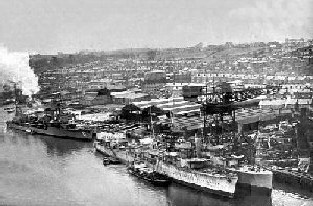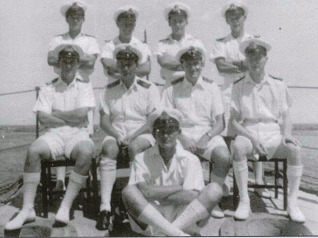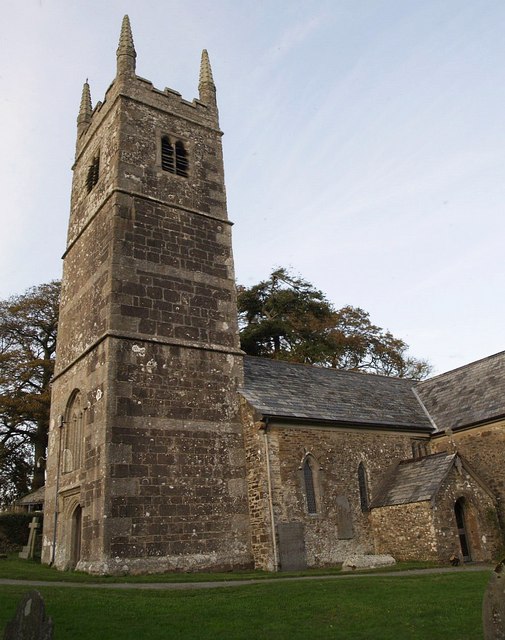COMMISSIONING
Under the 1939 War Emergency Programme - the Admiralty invited shipbuilders to offer tenders for the construction of a further 20 Hunts (followed soon afterwards by another 16). J S White successfully won contracts for four of these new ships; HMS Silverton, HMS Puckeridge, HMS Southwold and on 29  July 1940 - under job number J6293, the final vessel of the four was laid down at the Falcon Yard on the east bank of the river Medina. Carrying the pennant L-99, she was to be named after one of the oldest hunt packs in the county of Devon - HMS Tetcott. A little over twelve months after the keel had been laid, Tetcott was launched with little ceremony from the east bank into the River Medina on 12 August 1941.
July 1940 - under job number J6293, the final vessel of the four was laid down at the Falcon Yard on the east bank of the river Medina. Carrying the pennant L-99, she was to be named after one of the oldest hunt packs in the county of Devon - HMS Tetcott. A little over twelve months after the keel had been laid, Tetcott was launched with little ceremony from the east bank into the River Medina on 12 August 1941.
Thirty-year-old Lieutenant Henry Richard Rycroft learnt of his appointment to the new ship towards the end of October. He had entered the Royal Navy through the Britannia Royal Naval College, Dartmouth as a cadet twelve years earlier in 1929. Rising through the ranks, by the outbreak of war he was First Lieutenant on the destroyer HMS Highlander, on which he was to remain until his appointment - as Commanding Officer - to Tetcott two years later.
By the end of November the ship had been transformed from an empty lifeless hull to a fully equipped, fully operational warship and, after a final dry docking in Southampton (White's had no dry dock of their own at Cowes), HMS Tetcott was ready for commissioning on 2 December 1941
For a description of HMS Tetcott's badge, click HERE.
Wardroom Officers on the commissioning of the ship were:
- Lieutenant Henry Richard Rycroft RN - Captain
- Lieutenant Dudley Davenport RN - First Lieutenant
- Sub Lieutenant Miles Dawson RN
- Lieutenant Ron Davis RNVR
- Sub Lieutenant J P P Thompson RNVR
- Surgeon Lieutenant Lewis RNVR
- Commissioned Engineer Wilkinson RN
- Warrant Officer E Wynne RN
- Midshipman Francis McCall RNVR
The following weeks saw Tetcott put through her paces in the Channel and around the Solent, ironing out final defects and concerns, which were still the responsibility  of the shipbuilders to correct. Full-power trials out of Portsmouth, the firing of every gun, each depth charge thrower put into action, the working of the windlass, and a multitude of other tests. Only after the long list of defects had been put right and the Captain was totally happy with his new ship, did the time finally come for the 'signing for the ship', which took place on 11 December at 16:00. Two days later, on Saturday 13 December, an order to proceed to Scapa Flow to start working-up proper arrived but sailing was postponed two days later to allow for the fitting of the delayed Type 285 radar set.
of the shipbuilders to correct. Full-power trials out of Portsmouth, the firing of every gun, each depth charge thrower put into action, the working of the windlass, and a multitude of other tests. Only after the long list of defects had been put right and the Captain was totally happy with his new ship, did the time finally come for the 'signing for the ship', which took place on 11 December at 16:00. Two days later, on Saturday 13 December, an order to proceed to Scapa Flow to start working-up proper arrived but sailing was postponed two days later to allow for the fitting of the delayed Type 285 radar set.
Pressing on through the Irish Sea, the journey was uneventful until the night of Tuesday 23 December. The First Watch had just handed over to the Middle Watch when, without warning, at 00:25 the Officer of the Watch, Sub Lieutenant Ron Davis, shouted for immediate evasive action as the shadow of another ship loomed out of the darkness. Before any corrective action could be taken, Tetcott shuddered as the two vessels collided.
The Flower Class corvette - HMS Heartsease with an experienced crew and numerous convoys under her belt, had ploughed into the port bow of the ship. The crew prepared to abandon ship as Tetcott began to list to port - water pouring in through the gash in her side. With the watertight doors preventing any further seawater entering the ship and, with the level of damage ascertained, it was obvious that major repairs would be required. Rycroft, after completing the complicated action of taking Heartsease in tow (hampered yet further by the dark night) managed to steer Tetcott up the Firth of Clyde, before anchoring alongside Gourock Pier on the morning of Christmas Eve 1941. The resulting Board of Enquiry ascertained that the entire incident was the fault of the Captain of Heartsease.
Finally, with the ship suitably patched up, she left Greenock at 05:30 on Friday 9 January 1942, bound for Southampton where she arrived at 14:00 on Saturday 10 January. Now back on home territory, but still not having started working-up proper, the ship was taken in hand by the shipbuilders Harland and Wolff on 19 January, with completion of repairs and refit expected in eight weeks.
 On Friday 27 February - with the ship still in dry dock at Southampton and many of the crew away on leave - the Captain, Lieutenant Commander Rycroft, along with Sub Lieutenant Miles Dawson and eight ratings made the long journey to Devon to pay a visit to the village that had given its name to their ship, coinciding their visit with the launch of the District's Warship Week (the discovery of that visit - over fifty years later - and the rediscovery of the ship's battle ensign laid up in the church, would lead to the creation of this website and the publication of the book).
On Friday 27 February - with the ship still in dry dock at Southampton and many of the crew away on leave - the Captain, Lieutenant Commander Rycroft, along with Sub Lieutenant Miles Dawson and eight ratings made the long journey to Devon to pay a visit to the village that had given its name to their ship, coinciding their visit with the launch of the District's Warship Week (the discovery of that visit - over fifty years later - and the rediscovery of the ship's battle ensign laid up in the church, would lead to the creation of this website and the publication of the book).
With all the crew back on board, repairs and refit now complete, HMS Tetcott slipped out from 37 Berth, Southampton, on 11 March - destination Scapa Flow, and the long awaited working-up period for both crew and ship. Almost immediately she began her intensive working-up trials designed to build an efficient ship's company able to work together under extreme pressure.
On Wednesday 8 April she sailed out of Scapa, around the west coast of Scotland and on up the Clyde to Greenock for a welcome boiler clean, which commenced on the tenth, allowing each Watch three day's leave - their last for many months.